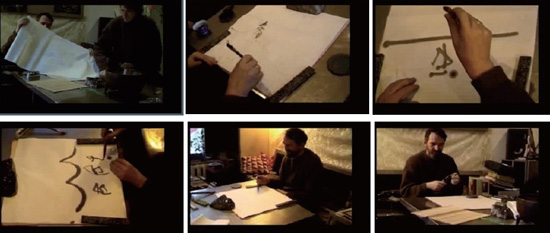|
Introduction of the artist:
Timur NOVIKOV(Russia)
Born in 1958, Leningrad, USSR. Died in 2002, Saint Petersburg, Russia.
Selected solo exhibitions: 2011 Retrospective, Krasnoyarsk Museum Centre,
Russia; 2008 Timur Novikov's Territory, The State Hermitage Museum,
Saint-Petersburg; 1998 Retrospective. 1978-1998, The State Russian Museum,
Saint-Petersburg; 1993 Stedelijk Museum, Amsterdam; 1993 Kunsthalle Düsseldorf,
Germany; 1992 Center for Fine Arts, Miami
Florida; 1991 Phyllis Kind
Gallery, New York; 1989 Timur Novikov and Afrika, Tate Liverpool;
Selected
group exhibitions: 2012 Contemporary Russian Photography, FotoFest 2012
Biennial, Houston, USA; 2011 New Academy, Saint Petersburg and ArtFoundation
Ekaterina, Moscow; 2010 Stroke with the Brush. New Painters. Necrorealists, The
State Russian Museum, Saint Petersburg; 2005 Russia! Guggenheim Museum, New
York; 2004 Moscow-Berlin, Martin Gropius Bau, Berlin and The History Museum,
Moscow; 2004 The Latest Acquisitions, Victoria & Albert Museum, London; 2001
Between Earth and Heaven, Museum of Modern Art, Ostend, Belgium.
Introduction of works:

The Drawings On The Rice Paper, chinese painting, 49×49 cm, 2002

The Drawings on the Rice Paper, video, 2002
Timur Novikov (d. 2002) is best known for his work with fabric whereby he
developed a style, at first charming in its formal simplicity with instantly
recognisable (almost childlike) motifs, that culminated in manifestations of
Neo-Academicism, a movement he led in St Petersburg during the 1990s, that
insisted on a return to classical ideals of beauty. Photographs – often of
cultural heroes - became incorporated into his appliqué “collages” increasingly
luxurious and thus more satisfying to the touch which is especially poignant as
during his last years Novikov was blind.
Novikov’s interest in art from the Far East, corresponding to the
aestheticism he espoused, is clearly evident in his Euro-China series. Made in
2002, it comprises thirteen pieces combining embroidered thread and beads and
(western) old-master reproductions on tasselled satin, in a cut-and-paste
postmodernist gesture. They are beautiful, but more affecting are Novikov’s
seven Pictures on Rice Paper (2002), made with Chinese ink. There is a video
that documents their production, in which we see the artist sightless, carefully
feeling his way around the paper with the assistance of his old friend and
fellow artist Sergei Bugayev (Afrika). The pictures are extraordinary, telling
in their unpretentiousness as they mark a return to the minimalism of Novikov’s
earlier work. We see trees and houses and boats against a mountainous horizon,
characteristic of Chinese landscape, as opposed to the straight line where sky
met the flat expanses he experienced as a child. This is an artist at the end of
his life - and still at the height of his imaginative
powers.
| 
